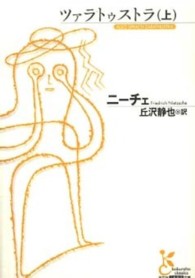Full Description
MCEM Part Cguide for trainees preparing for the MCEM OSCE exam. Presented in a clear layout, chapters are mapped to the exam circuit to provide structured revision in all the syllabus topics. Featuring a wealth of practice stations, this book provides the essential clinical knowledge and practical skills necessary to succeed in the MCEM Part C OSCE exam.110 practice stations, reflecting the breadth of skills and topics tested in the actual examProvides concise summaries of all the stations examined, including history taking, communication skills and proceduresAddresses every aspect of the exam, including the circuit, content and markingHighly illustrated to improve understanding of key concepts
Contents
CONTENTSPrefaceMCEM Part C OSCE exam - Curriculum summaryHow to use the bookPrinciples for OSCE successPreparation/training/practice - How to prepare for the examPracticalities - What to expect on the dayAdditional resources for the examChapter 1: History taking, including acute presentationsIntroductionAbdominal pain, renal colicAbdominal swelling, change in bowel habit, PR bleedALTEBack painBlackout, collapse, syncope, seizureChest painDiabetes, hypoglycaemiaDizzines, fallsDysphagia, sore throatFebrile convulsionFever, GUHaematuriaGI bleedHeadacheJaundiceNeedlestickLimping childPalpitationsRashSexual history, HIV, PID, PV bleedShortness of breath, haemoptysis, coughSnake biteWeakness (non-stroke), TIA, CVAWeight lossChapter 2: Communication skillsIntroductionAngry parent, patient: missed fracture, diagnosis, not prescribing antibiotics, no x-ray for pulled elbowBreaking bad news: death, CVA, head injury, stopping ventilationCapacityCDU ward roundConfidentiality: policeConsent: blood transfusion, GillickDifficult referralDriving post seizureMajor incident preparationNAIPrioritising patients, CDU ward roundTeachingChapter 3: Systems examinationsIntroductionCardiovascularEye examination, slit lamp, red eyeGastroenterologyNeurology: upper limbsNeurology: lower limbsNeurology: cranial nervesRespiratoryThyroid examination, statusChapter 4: Joint examinations IntroductionAnkleBackElbowHandHipKneeNeckShoulderChapter 5: PsychiatryIntroductionDepressionDSH, suicide risk: SAD PERSONS, poisoning: toxidromesManiaMental state examination, mini mental state examinationPsychosisSubstance misuse, aggressive, disturbed behaviourChapter 6: Procedures/Teach a colleague IntroductionABG, arterial cannulationAirway assessment, protectionAscitic tap, drainCentral venous cannulationChest drainClearing a c-spineConnection to a ventilatorDC cardioversionFAST, aorta, vascular access scanHandwashingIntraosseous needle insertionKnee aspirationLumbar punctureNasal packingNerve block: femoralOpthalmoscopyOtoscopyPeak flow, inhaler, spacer, nebuliser techniquePerforming an ECGPhlebotomy, cannulation, blood culturesPlasteringPleural tap and aspiration, pneumothoraxRapid sequence intubationSurgical airwayTeach while managing an acute situation: airway, anaphylaxisThomas splint, Donway splintUrinary CatheterVaginal examination, speculum examinationWound management, suturingChapter 7: Resuscitation, including major presentations ALS introductionAnaphylaxisBLSDelivering a baby normal, abnormal circumstancesPacingPEA/asystolePeriarrest/cardioversionPost-resuscitation carePre-ecplampsiaPregnancy, OD, hypothermia, drowningVF/VTATLS introductionBurnsCardiac tamponade, thoracotomyHaemothorax, pneumothoraxHead injury: airway problem, neuroprotectionPregnancy Shock, bleeding from abdomen or pelvisTrauma: airway problemChapter 8: Closing commentsFinal preparationManaging an OSCE station you didn't expect







